Future-Proofing Copenhagen
Danish design transforms the city into a natural sponge to prevent flooding
After a thunderstorm flooded Copenhagen in 2011, the city embarked on an ambitious climate adaptation plan to future-proof itself against cloudbursts and thunderstorms.
As part of that ambition, the city hired our nature-based design studio, SLA, to define its future strategy for using city nature as the main driver for climate resilience.
Climate Adaptation & City Nature
To solve the task, we facilitated a cross-departmental ‘Think Tank’ for all relevant departments in The City of Copenhagen on how to combine climate adaptation with a nature-positive approach. The challenge was to overcome the ‘silo thinking’ and inter-departmental infighting, which so often prevents cities from achieving their nature-positive ambitions and goals.
In the process, our designers and strategists brought key personnel from all relevant municipal departments together (maintenance, legal, planning, parks, traffic, etc) as well as select external experts and stakeholders (researchers, water authorities, etc.), to work together and get everyone involved on the same page.
From that ‘Think Tank’ came the Climate Adaptation & City Nature strategy as well as a series of 300 pioneering climate adaptation projects that show how to combine climate resilience with a nature-based approach to creating better and more sustainable cities – in a variety of scales, construction budgets, and typologies.
Sankt Kjelds Square: From roundabout to urban forest
Sankt Kjelds Square is Copenhagen’s largest and most radical climate project to date, transforming a busy roundabout and surrounding streetscapes into a new form of urban climate forest. By removing two thirds of the area’s asphalt, prioritizing active mobility, creating green ‘sponge areas’ for rainwater handling, and adding 586 new trees, the area is transformed from grey infrastructure for cars into a lush and inviting public realm for all.
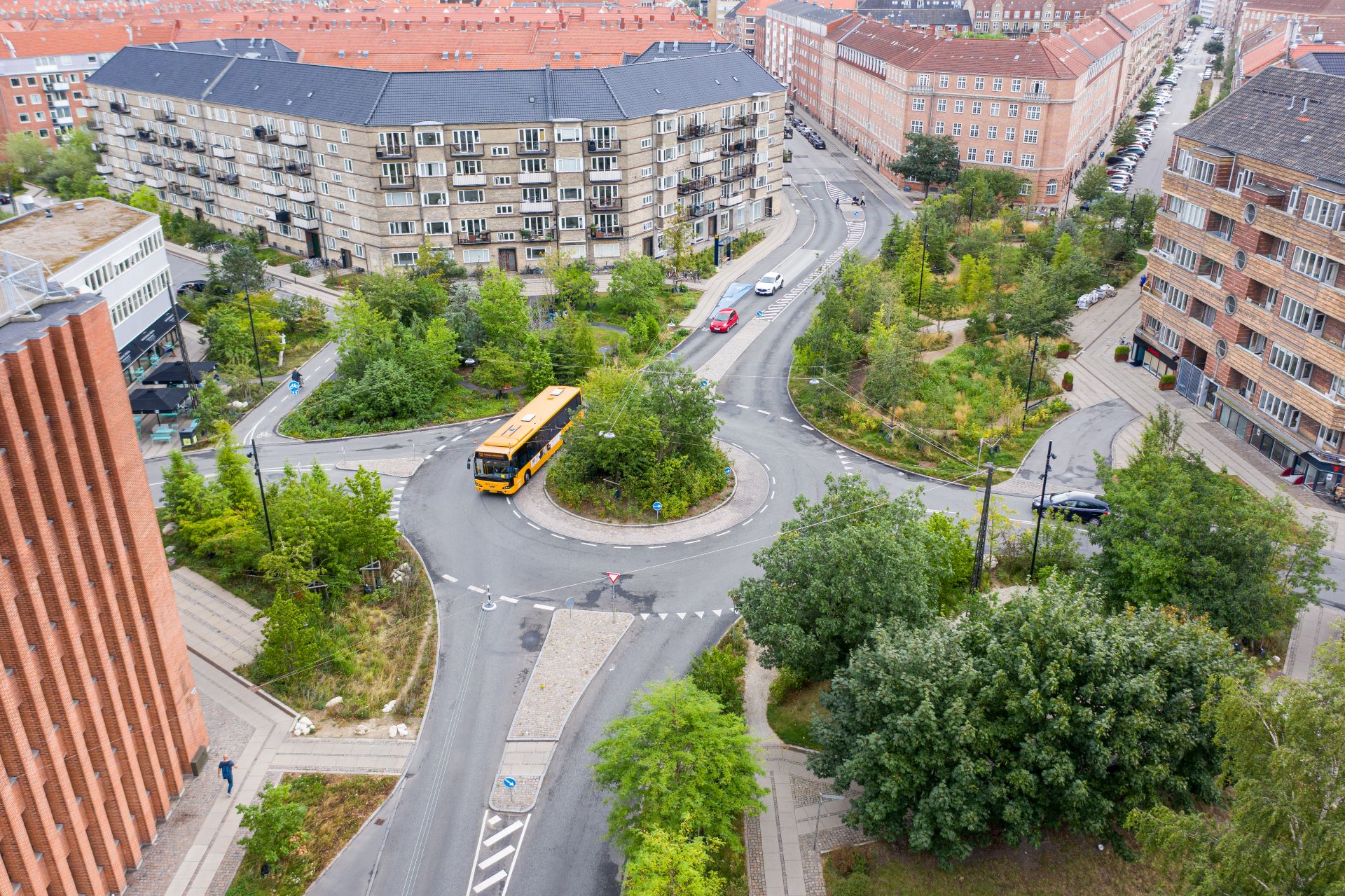
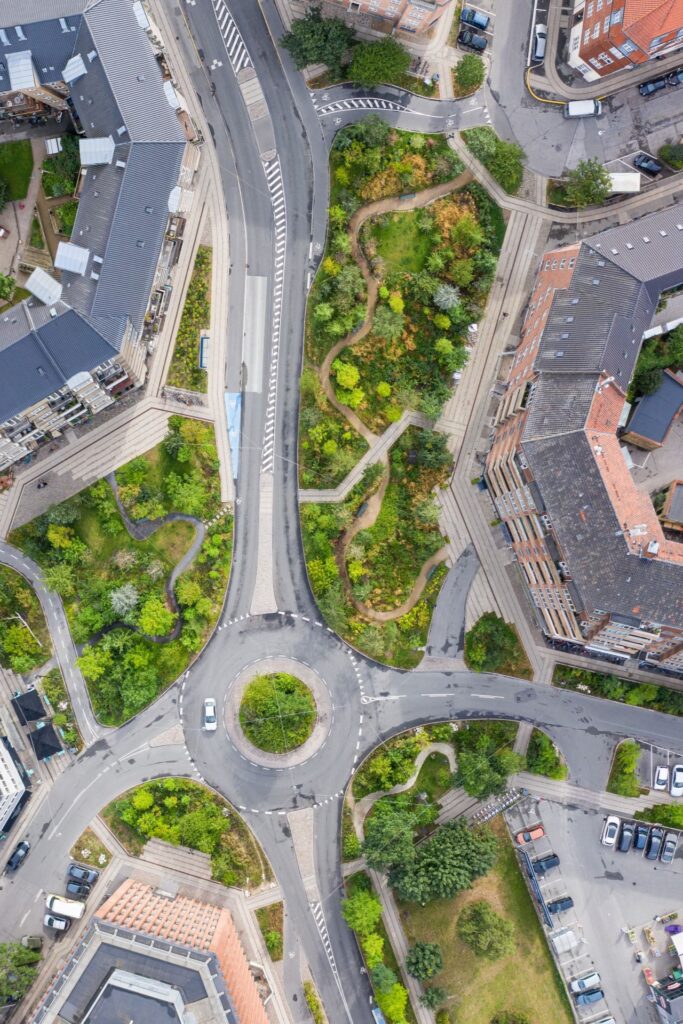
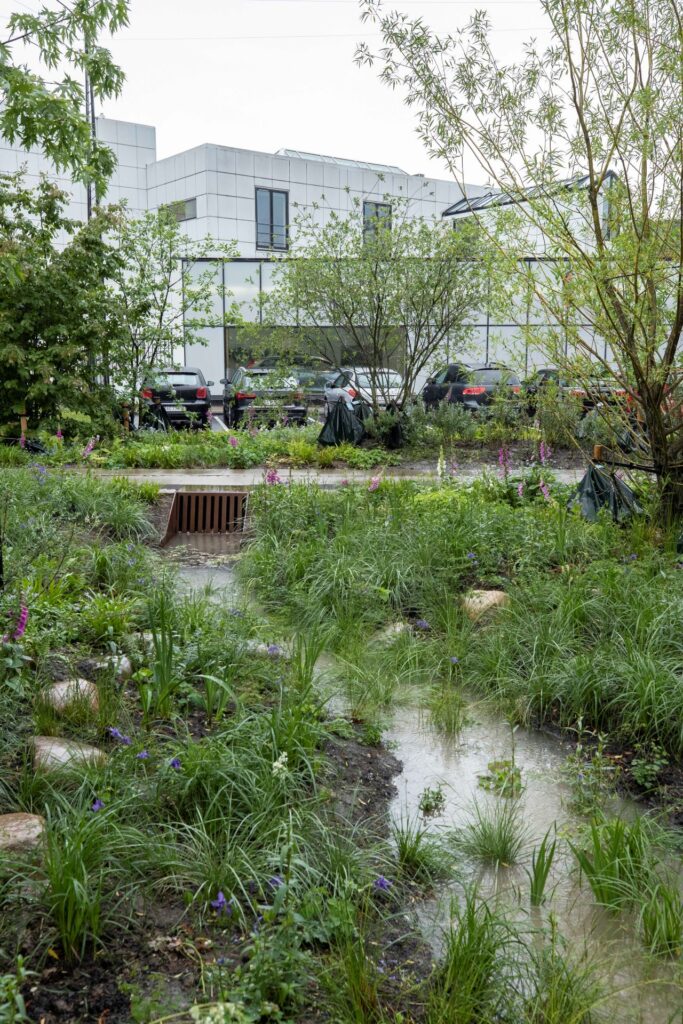
The neighbourhood is now fully stormwater-proof while at the same having received a host of added benefits: the local biodiversity has seen a 121% increase in green areas, a 1.200% increase in trees, and a 30.000% (!) increase in number of flowers and bushes, with the planting design absorbing 3.960 kg of carbon dioxide a year (an increase of 518%). The design has reduced the urban heat island effect by 21% (from 34,9 to 28,7 degrees Celsius on the hottest summer days) while creating opportunities for a dramatic 320% increase in public life and a host of new shops, cafes, and businesses.
Tomsgårdsvej: The courtyard of the future
The project Tomsgårdsvej – Courtyard of the Future is the City of Copenhagen’s pilot project for how to climate-proof thousands of private courtyards against thunderstorms and stormwater in the city while at the same time making them greener, more sustainable, and more livable.
The design has reduced the urban heat island effect while creating opportunities for a dramatic increase in public life.
In the project, 195 new trees were planted and a host of different nature typologies to handle every imagined scenario of rain. We also designed a new form of ‘climate wall’ made of rammed clay to tie the courtyard together and contain the most extreme thunderstorms.
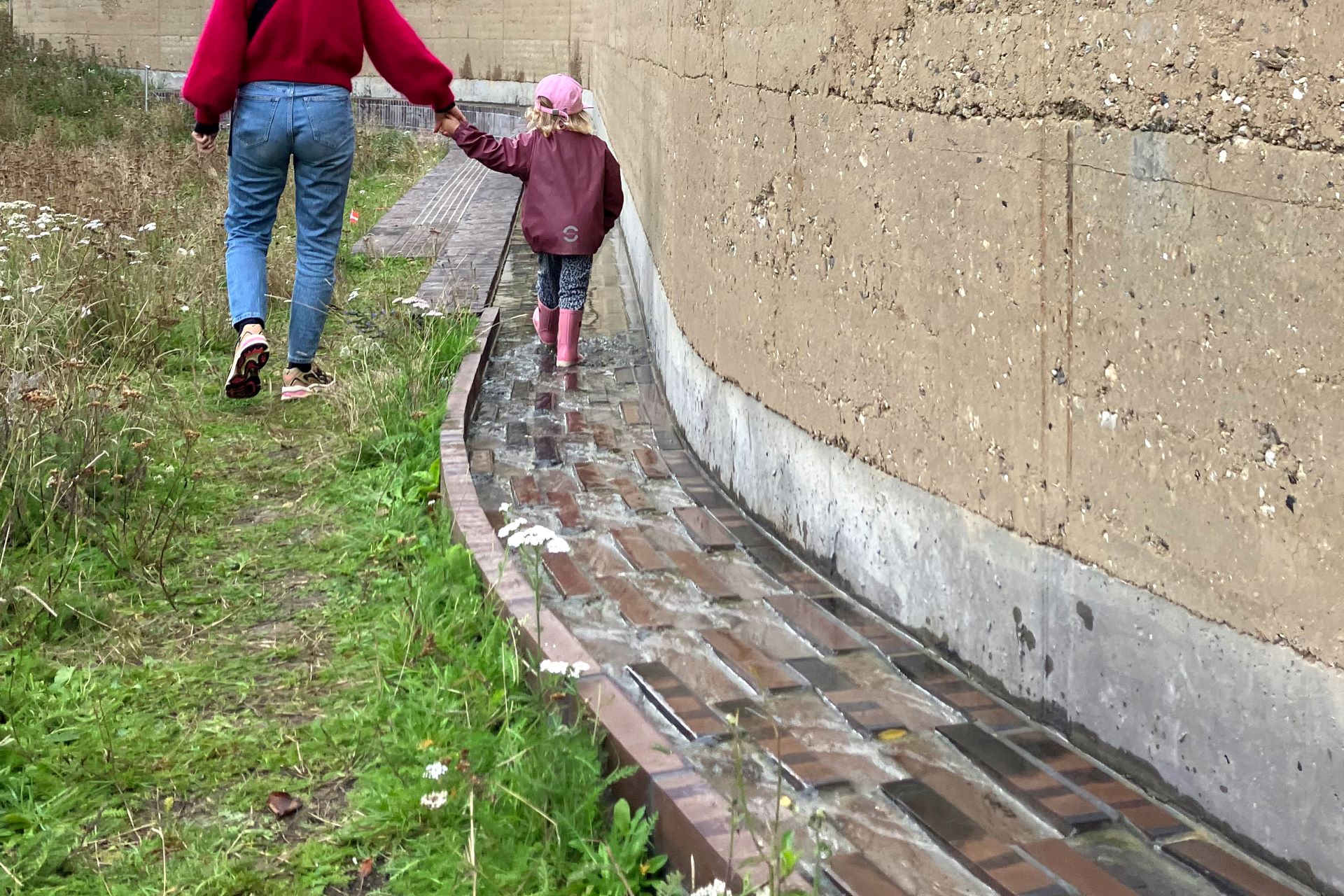
The Tomsgårdvej Courtyard is surrounded by a lot of traffic noise that is too loud to remove through traditional barriers. Instead, the design ‘camouflages’ the traffic noise with nature’s own sounds. The studio did so by planting a dense forest of Aspen trees, as their leaf structures create pleasant rustles in the wind, and by building an 80-meter long ‘water staircase’ that uses rainfall to create rippling sounds of water that mask the traffic noise with its pleasant soundscape.
All materials in the courtyard are recycled or upcycled to provide a minimal carbon footprint with the extensive trees and greenery each year naturally sequestering significant amounts of CO₂ – showing how climate adaptation and carbon neutrality can go hand in hand.
Grønningen-Bispeparken
Grønningen-Bispeparken is Copenhagen’s latest climate adaptation project that shows how cities can upgrade their current passive parks into active climate parks that add ecological, climate, and social value.
Rain is not seen as a threat – but as a natural resource to be celebrated.
In Grønningen-Bispeparken, our team of designers, anthropologists, and biologists decided to let form follow nature, thus turning 20,000 m₂ of barren lawn into a new playful and art-filled urban nature park.

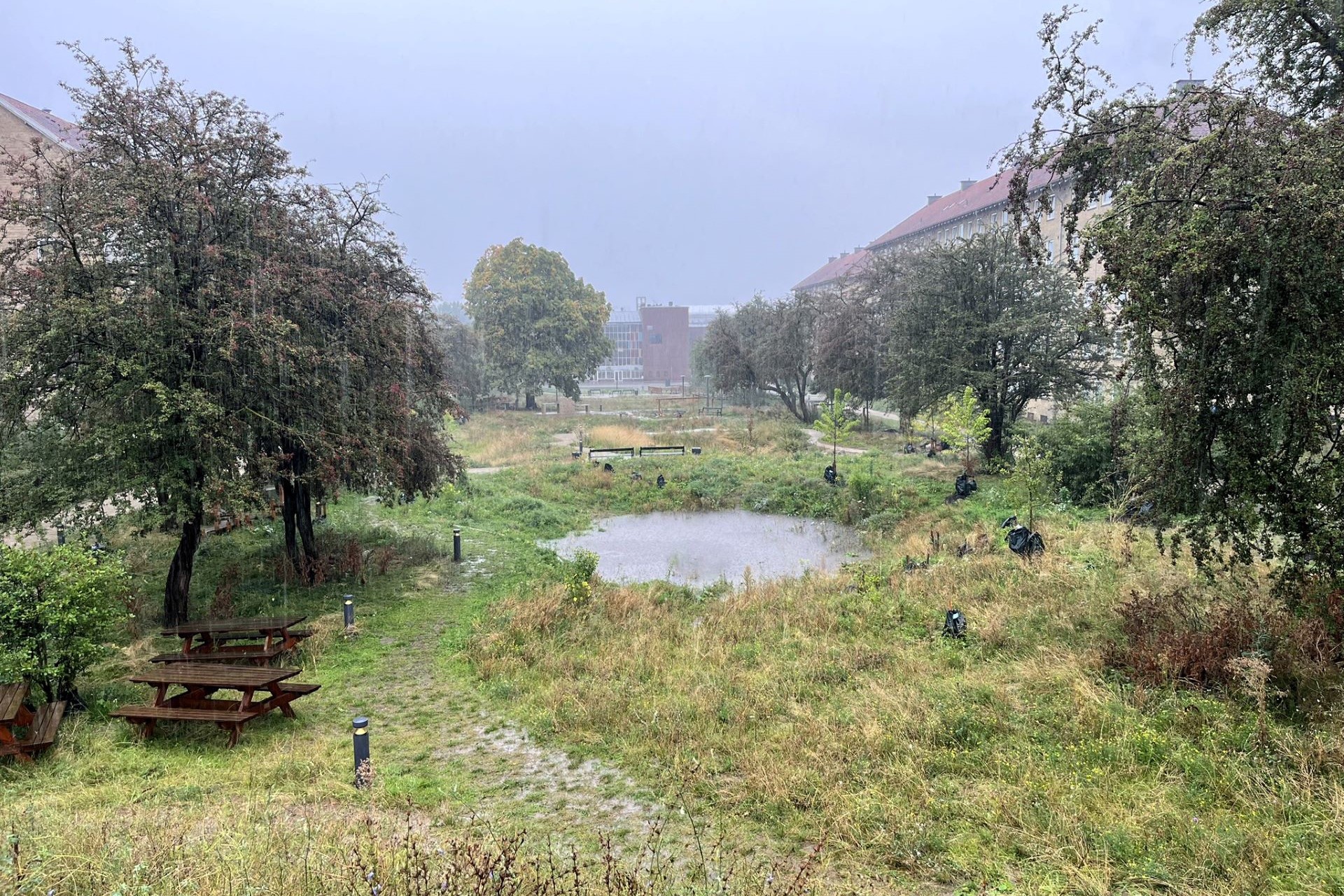
Designed to contain up to 3,000 m₃ of rain in 18 specially designed ‘social basins,’ in Grønningen-Bispeparken rain is not seen as a threat – but as a natural resource to be celebrated.
The park was inaugurated on the 31st of August this year. Only five days later, a major thunderstorm hit Copenhagen, flooding several major highways and infrastructures. But in Grønningen-Bispeparken, the rain only made the new park more beautiful and lush – while the surrounding houses and infrastructures remained safe and dry.